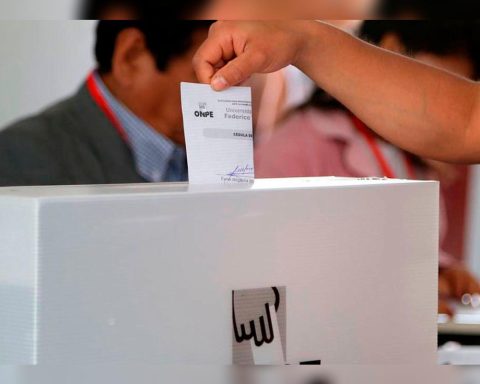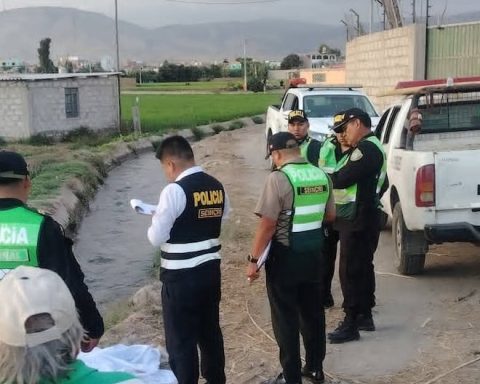By definition, the caudillo is fleeting, since his leadership is tied to the figure of the messianic leader and the loyalty of his battalion. In the 19th century, regional caudillos were suddenly replaced by military coups, each imposing its own Congress and Constitution. Creoles, mestizos and mulattoes took turns in power thanks to the democratic Army, in a coup logic where Caesarism imposed order in the midst of chaos.
Remnants of this caudillismo continued into the 20th century, as when ‘Chino’ Fujimori created a CCD and a new Constitution, supported by the Armed Forces.
In an alternative reality, Fujimorism had to follow the fate of other caudillo parties. Like the Democratic Reformist Party, which disappeared with Leguía and then reappeared with his daughter, Carmen Leguía, the Keiko of the time who unsuccessfully ran for a seat in the Constituent Assembly of 1978. Or the fate of the UNO, which after nominating María Delgado de Odría launched Dora Narrea in 1992, the first female candidate for the presidency. Breaking the rule, Fujimorism maintained a dormant pocket of votes after the fall of the regime. But neither Carlos Boloña nor Martha Chávez were able to replace the leader.
The big mistake of Alberto Fujimori was not leaving a strong party to defend his legacy. A mistake that Morales Bermúdez made with the National Democratic Unity Front, which participated without much fanfare in the 1985 election. Or Juan Velasco, who created the Revolutionary Socialist Party (PSR) to defend his reforms in the Constituent Assembly, although it was later absorbed by the United Left and has left as a legacy some officials of the Government of Dina Boluarte.
Look: Alberto Fujimori’s remains are now in Campo Fe de Huachipa
FROM CHINESE TO CHINESE
Seen from a distance, Fujimori set out to dismantle the Velasco state. As in a game of mirrors, one cannot understand the authoritarian reform of the 1990s without first understanding the authoritarian reform of the 1970s. It is a phenomenon that goes from ‘Chino’ to ‘Chino’.
Because Fujimori was to Vargas Llosa what Velasco was to Haya de la Torre. Both ‘Chinese’ embodied the authoritarian and deficient version of the reforms that we should have made in democracy. History would be different if we had had an agrarian reform as originally conceived, modernizing the Andean latifundia and not destroying the coastal haciendas. And the economic model would not be in question if the economy had been liberalized by popular mandate, with second-generation reforms included.
The lesson left by Fujimori is analogous to that of Velasco: vertical reforms carried out by authoritarianism will always suffer from a lack of political legitimacy. The original sin of caudillo rule has a very high cost.
The question then becomes obvious: is it possible to make structural reforms in a democracy? A valid question here and in Milei’s Argentina. We should re-examine Belaunde’s second government, which, despite having both chambers under Manuel Ulloa, was guilty of gradualism, not to mention inaction.
Making omelettes without breaking eggs is the real democratic challenge. Because after Fujimori, no ruler has made deep reforms, the kind we so need in health and education, for example.
No president has assumed the political cost of making reforms in a democracy. And that is the real post-Fujimori tragedy.
NATION WITHOUT NARRATION
After the fall of the regime, Fujimorism did not politically defend its reforms. It did not leave a solid party, a doctrine, an ideological legacy. And by the time Keiko Fujimori was running for president, it was already too late. The CVR, the LUM and Yuyanapaq had already marked the field. Fujimori’s historic sentence had made us one of the few proud countries, capable of imprisoning its dictator. And both the press and the judiciary had done their part, parading all the regime’s criminals for a decade.
Fujimorism won the battle against terrorism, but history was written by the left. The Fujimorist people gave the votes, but the oranges did not know how to impose a political discourse that defended the legacy of the regime. And so, while Fujimorism mistreated its few intellectuals, such as Fernán Altuve, Martha Hildebrandt or Pablo Macera, the anti-Fujimorist narrative was already being repeated in classrooms and newsrooms.
Even now, in the midst of the patriarch’s funeral, the ex-DJ Carlos Raffo was leading the way with technocumbia, while the heirs lost themselves in family anecdotes. Martha Moyano herself has confessed that she apologized to the leader on his deathbed because they did not know how to politically defend the legacy of the regime in the new generations. Fujimori’s late biography was a desperate attempt.
As an atypical party, Fujimorism was created from authoritarian power and not from the people or from persecution. Perhaps that is why it had no mystique nor did it know how to manage electoral abundance in times of plenty. Doing work is not enough to win elections. Odría knew this and Alan knew it after his second government. The vote is emotional.
Since he said in the middle of the campaign that he did not admire any character in Peruvian history, it was clear that Alberto Fujimori He always had a disdain for words. Perhaps because he was opposed to his rival Vargas Llosa or the Kantian philosopher who was ravaging the country. Fujimori wanted to refound a nation, but he forgot the narrative. And little by little, like a drop of water that erodes a stone, the anti-Fujimori narrative, which began with a handful of opposition journalists in the written press, percolated throughout society. Thirty years later, the entire country knows about the crimes of the Fujimori regime. Even the pulpines, who did not live in the 90s and only repeat what they read somewhere. A triumph of the written word in a country that does not read.
Fujimorism, finally, was developing its own antibodies. From the Ministry of Women and the gender discourse, orange initiatives that would later be turned against them with forced sterilizations. From the CCD that gave voice to a new opposition left from within. From the anti-terrorist fight, with excesses that ended up reinforcing the network of human rights NGOs. And from economic growth, a bonanza that would create a new middle class that would later be known as ‘caviar’.
After the death of the patriarch, the solid Fujimorist vote may vanish (or dissolve) into thin air. If Keiko Fujimori If she does not change her ways and create a real party, her group will follow the fate of other caudillismos. She would become another heir to some Odriismo. And paraphrasing Borges, forgetting Alberto Fujimori will be the only forgiveness and the only revenge.
RECOMMENDED VIDEO
















